We had been looking forward to our Jaguarland adventure since we booked our trip to Bolivia, and when the day finally came, we were thrilled. Being avid safari goers, we couldn’t wait to explore one of the best places in South America for wildlife sightings.
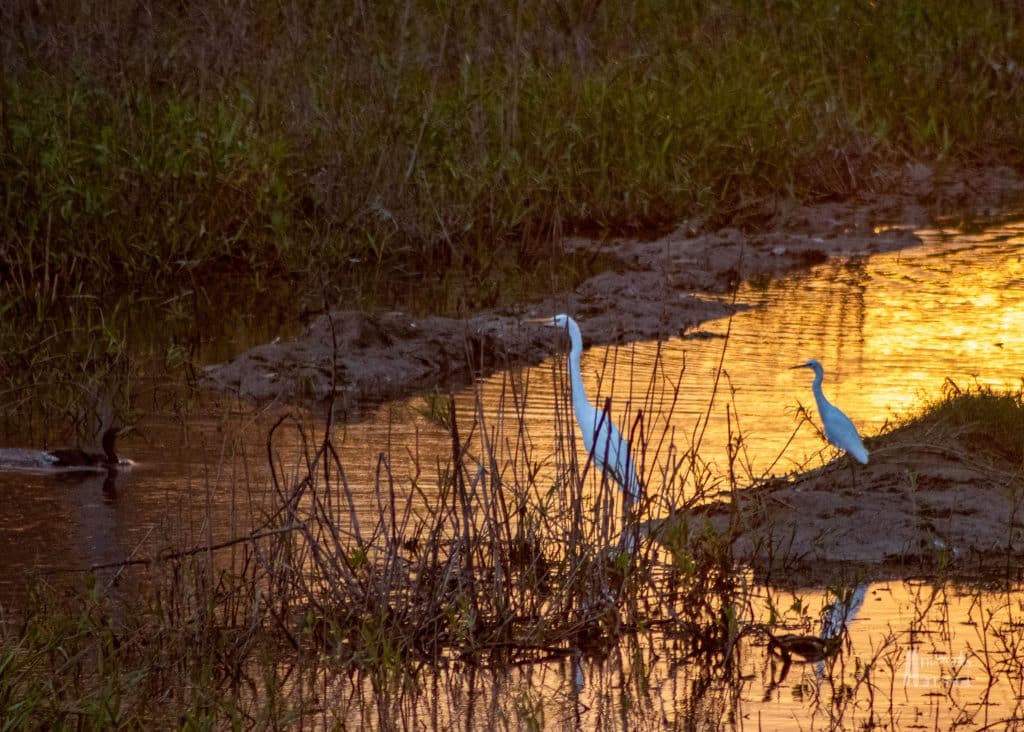
This privately owned property is considered one of Bolivia’s top wildlife hotspots. Monkeys swing through the trees, sloths hang low in the branches, and if you’re lucky, you might spot an anaconda gliding through the water. But for us, the main draw was the jaguar. Jaguarland is considered the second-best place in the world, after the Pantanal in Brazil, to see jaguars in the wild. Caimans, pink dolphins, and capybaras are common here, and the park is also a birdwatcher’s paradise, featuring toucans, spoonbills, vultures, macaws, kingfishers, and more
Exploring Jaguarland
We hit the road from Santa Cruz, wide eyes and smiles, heading to Jaguarland—an extensive property made up of farmlands, tropical forests, grasslands (pampas), and lakes. It’s about a five-hour drive from the city.
Unlike our African safaris, where animals often fill the landscape, Jaguarland’s thick forests and unpredictable terrain made each sighting feel like a hard-won discovery. The tall grasses and crops limited views in places, but we still saw a wide range of mammals, reptiles, and birds.
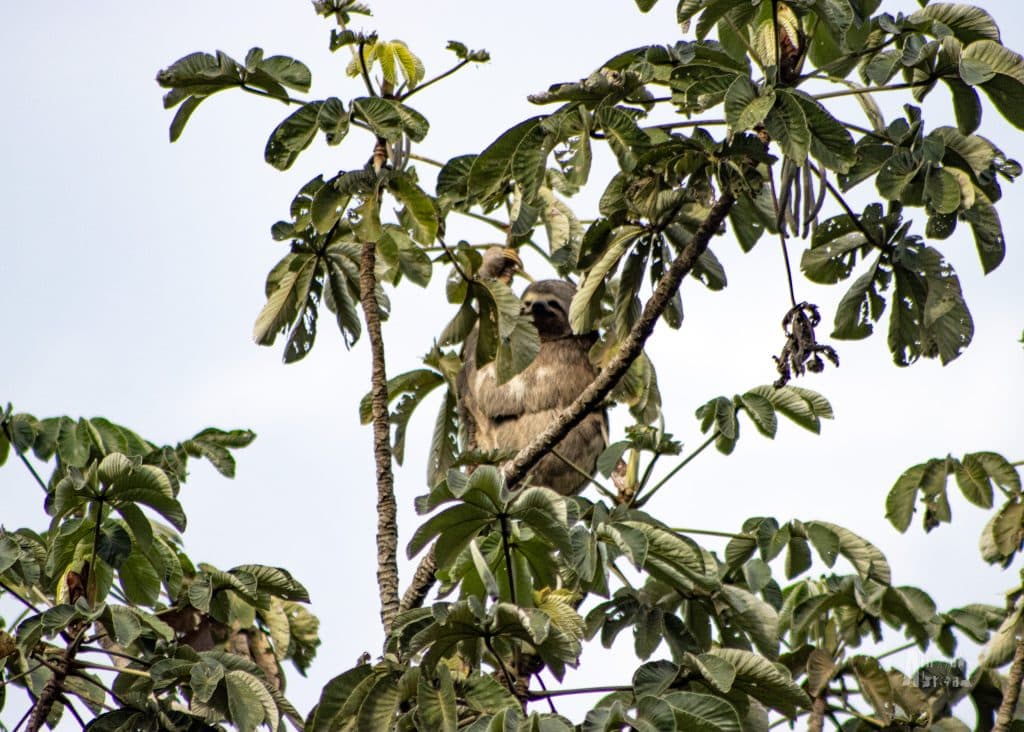
The guides maximized our hours in the park, bringing us to a variety of habitats where different species could be spotted. We easily spent over 20 hours in the vehicle across three days, and the boys didn’t complain once. They amazed us with their enthusiasm, perseverance, and deep love for animals. Despite the early mornings and late nights, they were ready to jump in the truck. In fact, Jackson and Mason had a better spotting record than us, staying focused throughout and calling out animals we might’ve missed.
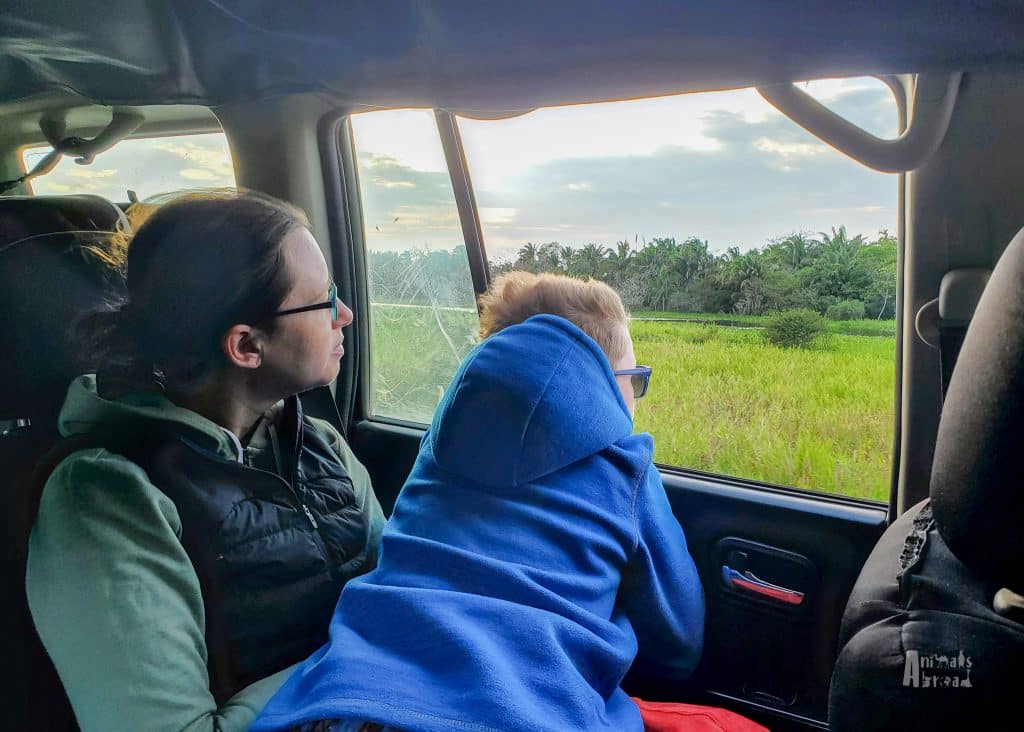
Our 3-Day Safari Itinerary in Jaguarland
Day 1: After arriving at the gate, we drove slowly toward camp, watching for wildlife. We dropped off our gear and went on an afternoon drive, returning around 7:30 p.m. for dinner.
Day 2: This was our longest and most exciting day—four game drives in total: early morning, mid-morning, late afternoon, and a night drive. We started at 5 a.m. to catch the early movement of nocturnal animals and wrapped up around 10:30 p.m. There were breaks in between for meals and some downtime at camp, which helped us recharge before heading out again.
Day 3: One last morning drive before breakfast, then we hit the road and made it back to our Airbnb by evening.
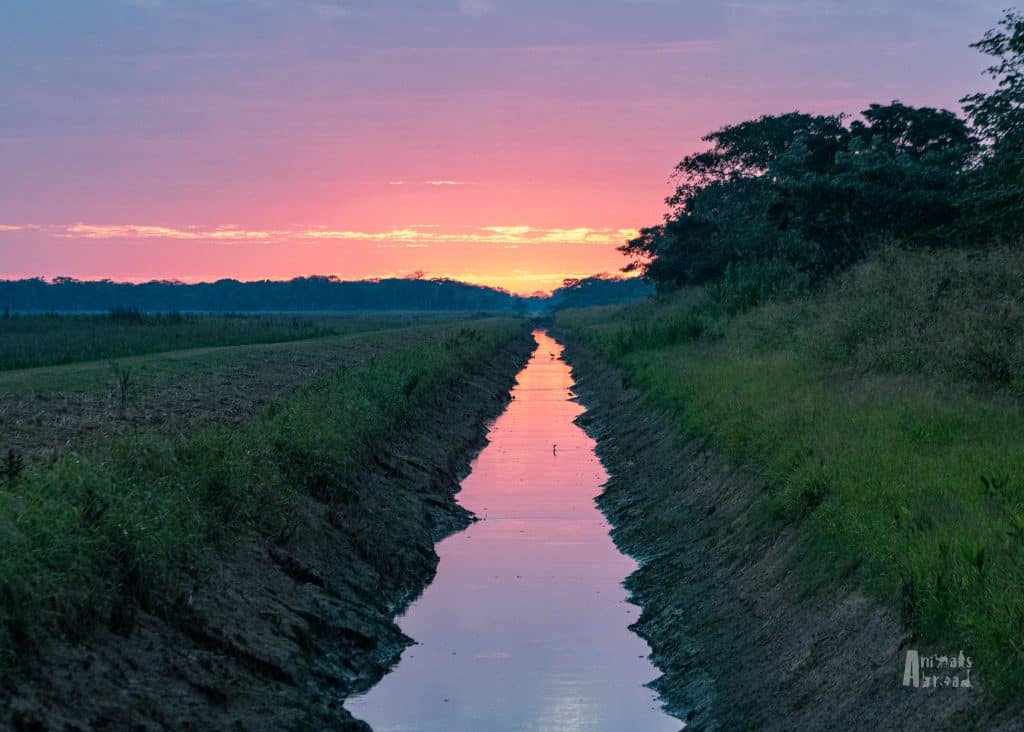
So, What Did We See?
We were lucky with sightings! Among the highlights: sloths, night monkeys, yellow squirrel monkeys, coatis, peccaries, marsh deer, wild foxes, agoutis, caimans, pink dolphins, and my personal favourite—the capybara. We saw entire families of capybara, babies included, swimming, grazing, and waddling across the road.
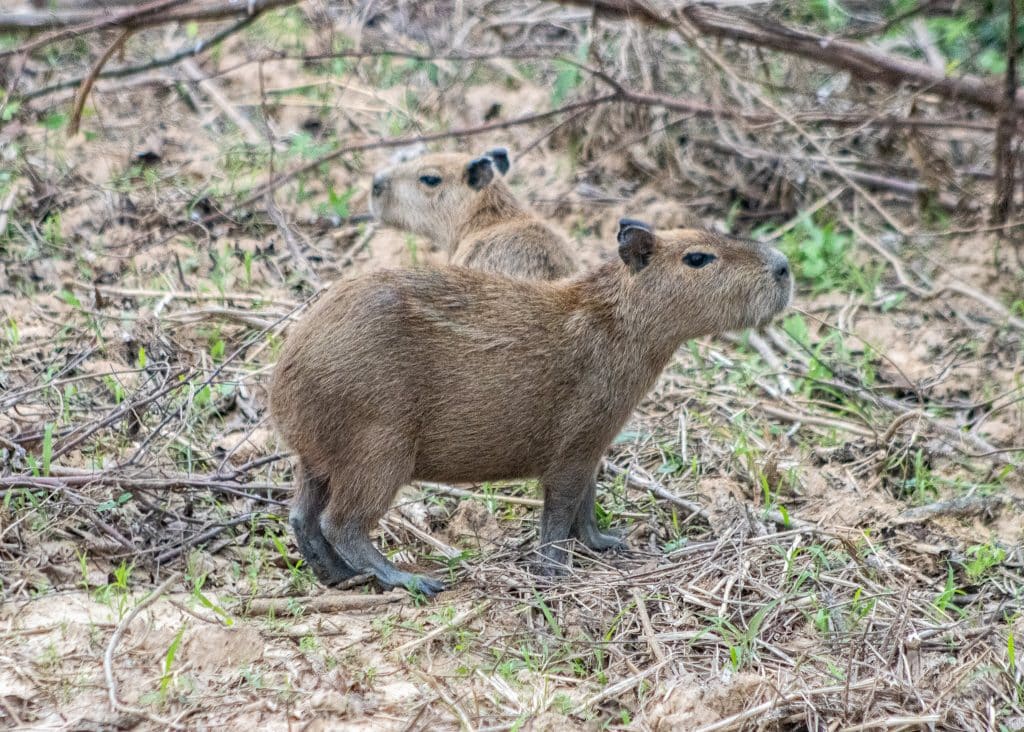
As for big cats? We had three ocelot sightings and one brief jaguar encounter at night—just the gleam of its eyes in the darkness, but thrilling all the same. Then, on the way out of the park, we got a rare treat: an orange jaguarundi crossed the road. Our guide said it was only the second time he’d ever seen one!
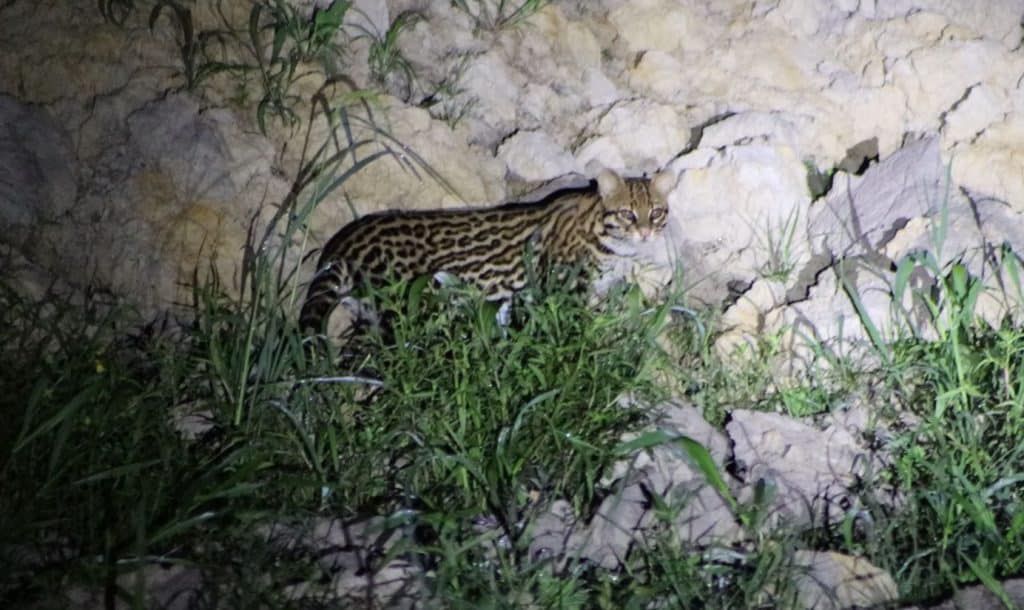
Although we’re not birdwatchers, the birdlife was impossible to ignore. We saw macaws, toucans, kingfishers, vultures, owls, rheas, spoonbills, parakeets, parrots, and cormorants, to name a few.
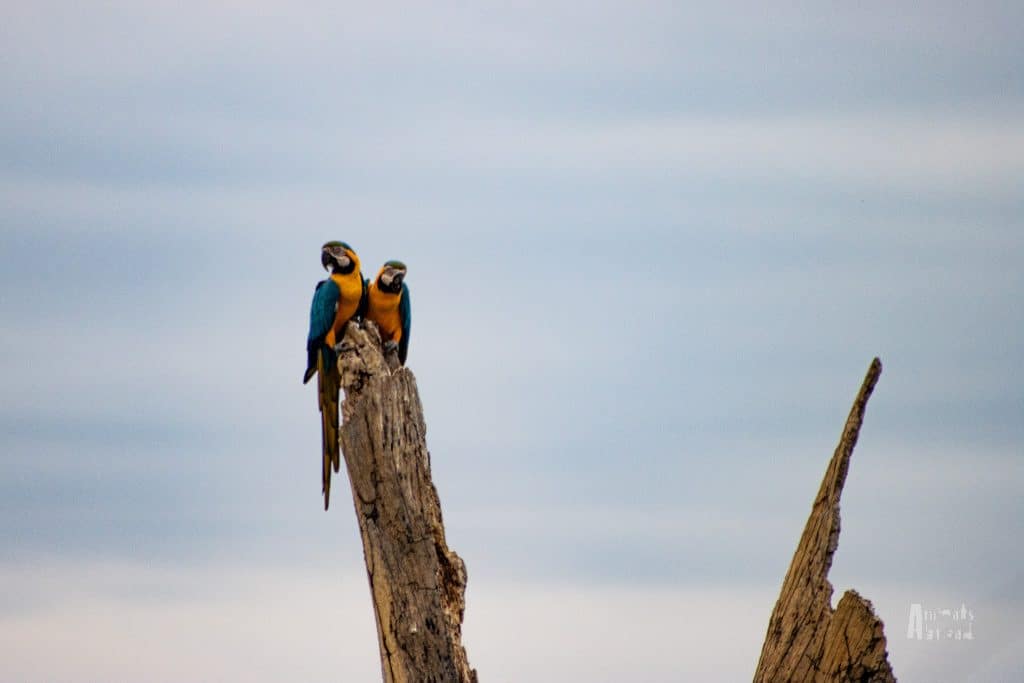
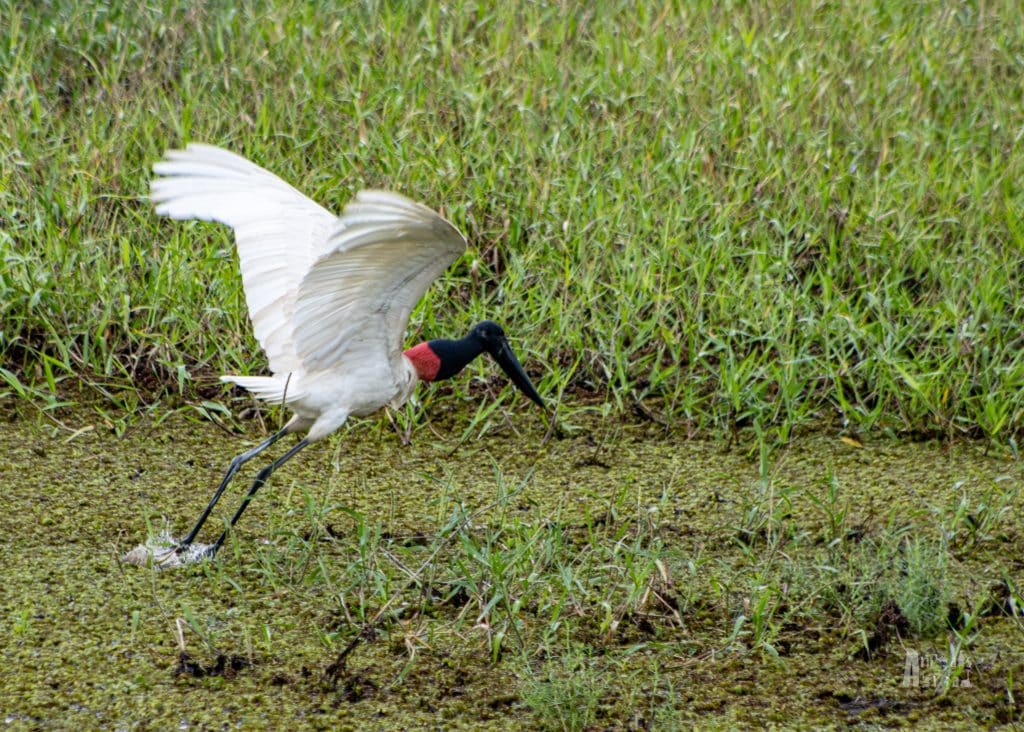
Tips for Visiting Jaguarland with Kids
• Manage expectations: Wildlife sightings are exciting but not guaranteed. The day after we left, our guide sent us a photo of a jaguar lounging on the road—a reminder that wildlife works on its own schedule!
• Pack for long days: Binoculars, books, sketch pads, and snacks helped fill downtime in the truck.
• Dress smart: Layers for chilly mornings and warm afternoons, plus bug spray and sun protection.
• Bring extra batteries: Electricity is available at camp, but you may need to recharge while on the road.
• Stay positive on early mornings: The excitement of spotting animals helps, but a cozy blanket or hot drink goes a long way.
• Encourage involvement: Let kids track animals, take photos, or use a wildlife checklist to stay engaged.
• Embrace the adventure: From bumpy drives to rare sightings, it’s an experience your family won’t forget.
For more tips: Safari with Kids: Tips from the Road
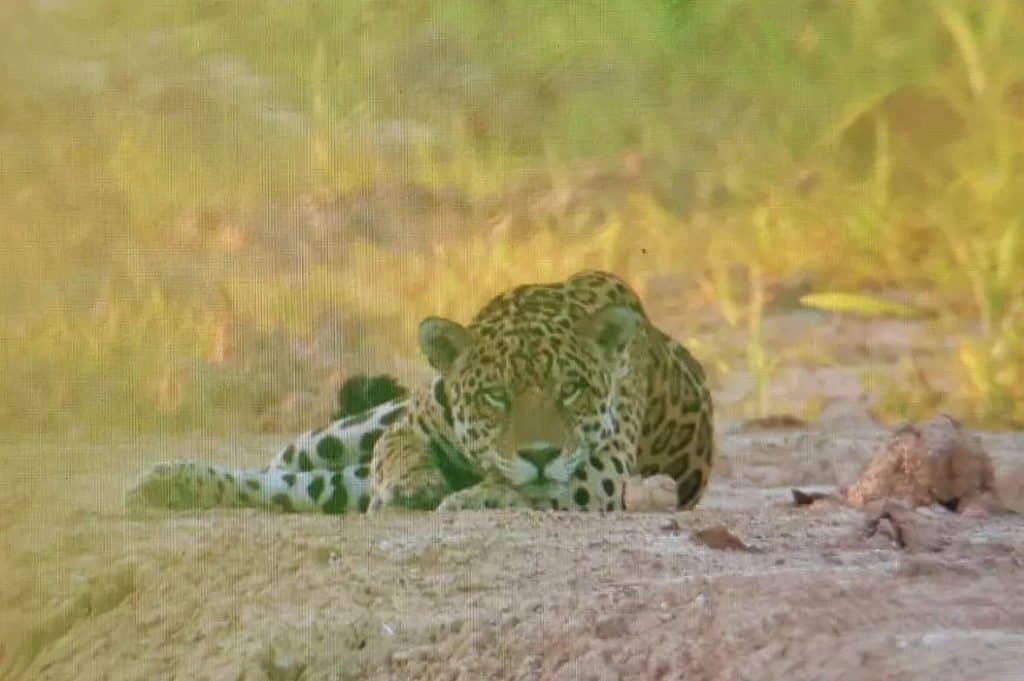
Camping in Jaguarland
Nick’s Adventures’ Jaguarland trip involves tent camping, which suited us perfectly—we love the outdoors. Mason even went as far as saying, “I just love camping. It speaks to me,” when we arrived.
We were expecting basic camping, but this felt more like “glamping” compared to our recent trips. We were provided with a large tent spacious enough for four comfortable mattresses, complete with sheets and cozy blankets. The shared bathroom had running water, a shower, and a toilet. Best of all, the campsite was inside the park, eliminating long drives to and from the gate and maximizing our time on game drives.
Warm meals were served throughout the trip, and snack packs were provided for the road. There was electricity in the main cabin for charging devices, and even limited Wi-Fi if needed.
The Guides
Nick and his team were fantastic—knowledgeable, enthusiastic, and great with the kids. They engaged the boys in wildlife discussions, showed them books, and encouraged them to help spot animals. Mason even celebrated his 10th birthday during the trip, and the team went out of their way to make the day feel special.
From pickup to drop-off, Nick’s Adventures took care of everything: smooth logistics, comfortable transport, great food, and expert guiding. It was an adventure to remember from start to finish. We are not affiliated with Nick’s Adventures—just very happy customers.

The Wild of Jaguarland
Our time in Jaguarland was everything we hoped for—wild, remote, and full of unexpected moments. It offered a very different feel from our African safaris, with fewer animals overall but more rewarding sightings after long hours of searching.
Jaguarland isn’t a place for quick wins—it’s for those who love the thrill of the search and don’t mind early mornings, late nights, and a bit of adventure. But if you’re willing to put in the time, it delivers a truly memorable wildlife experience in one of South America’s most unknown destinations.
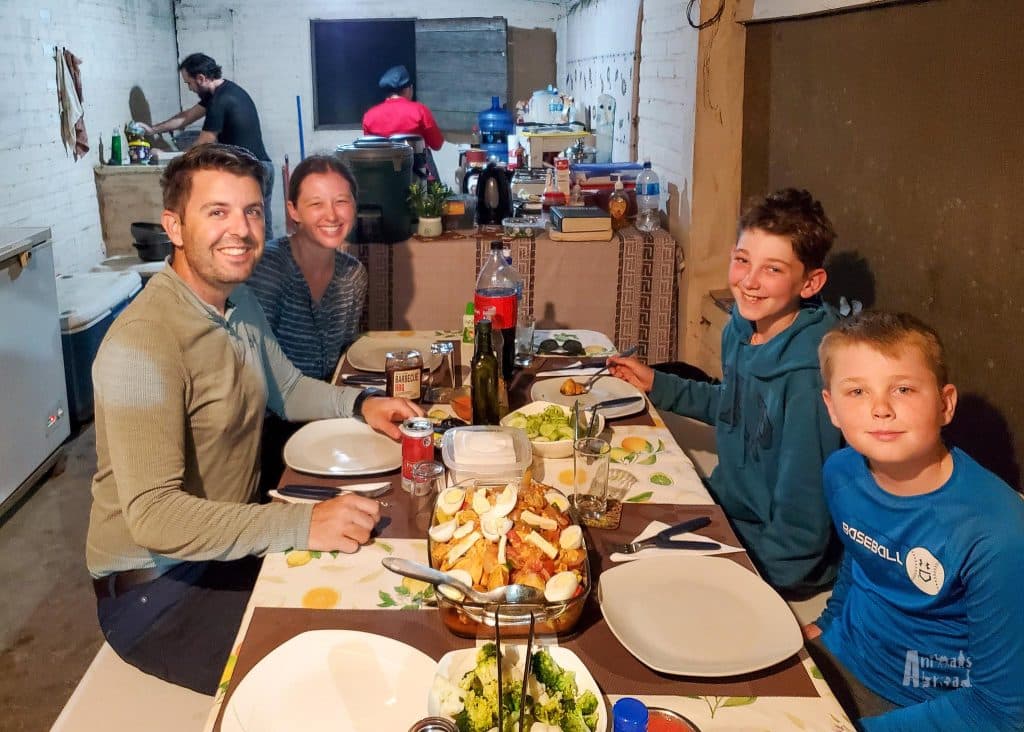
Ready to Explore Bolivia?
Check out these related posts to help plan your trip:
• Bolivia with Kids: A 27-Day Itinerary
• Family Guide to La Paz: A Flexible 5-Day Itinerary
• Breathless in Bolivia: Managing Altitude Sickness as a Family
• Travelling to the Amazon: An Adventure in Itself
• Exploring Bolivia’s Amazon: Pampas and Madidi National Park
• Visiting Toro Toro National Park: Know Before You Go
• Bolivia’s Uyuni Salt Flats with Kids: A Family Adventure

